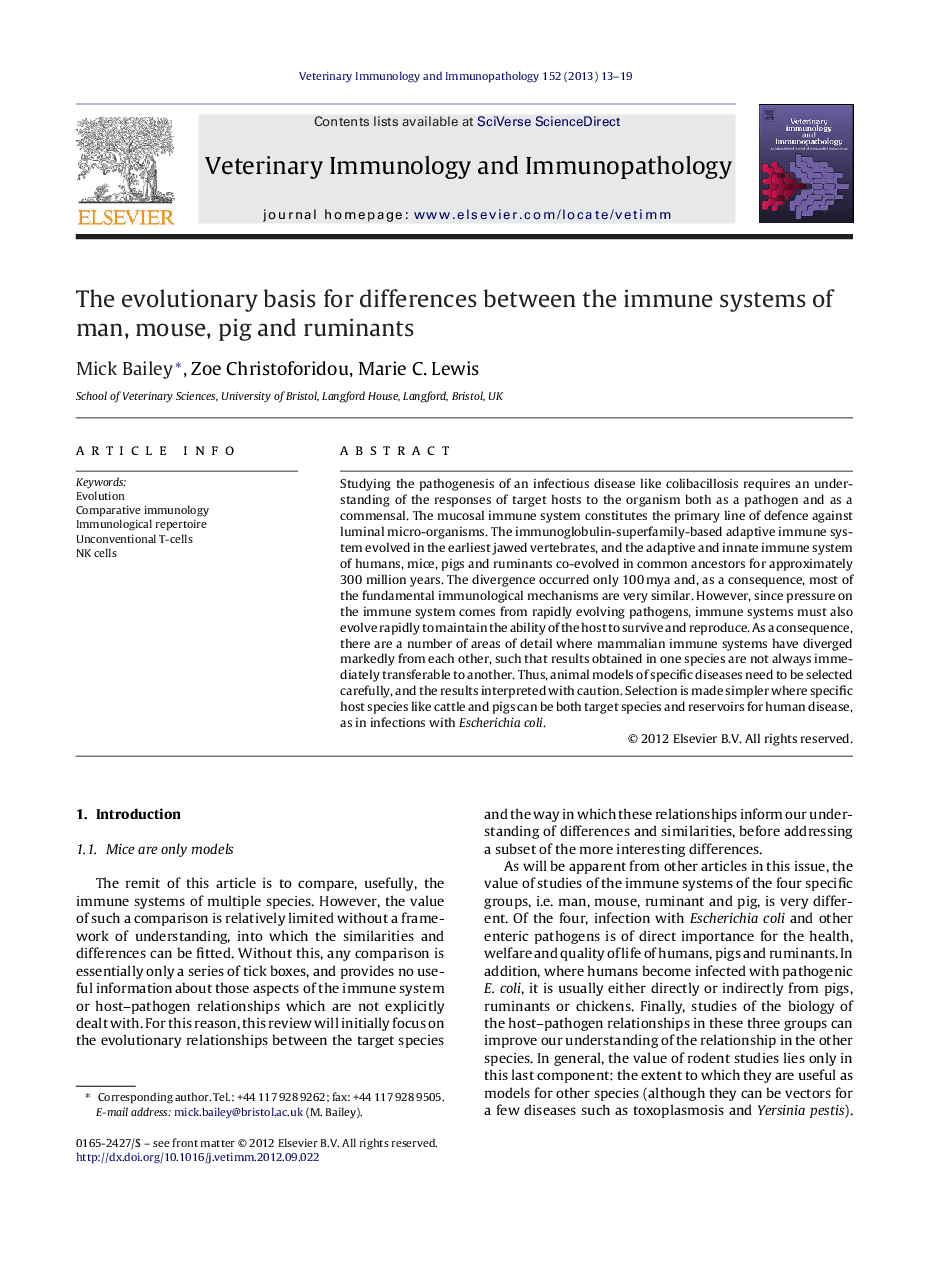| کد مقاله | کد نشریه | سال انتشار | مقاله انگلیسی | نسخه تمام متن |
|---|---|---|---|---|
| 2461731 | 1555048 | 2013 | 7 صفحه PDF | دانلود رایگان |

Studying the pathogenesis of an infectious disease like colibacillosis requires an understanding of the responses of target hosts to the organism both as a pathogen and as a commensal. The mucosal immune system constitutes the primary line of defence against luminal micro-organisms. The immunoglobulin-superfamily-based adaptive immune system evolved in the earliest jawed vertebrates, and the adaptive and innate immune system of humans, mice, pigs and ruminants co-evolved in common ancestors for approximately 300 million years. The divergence occurred only 100 mya and, as a consequence, most of the fundamental immunological mechanisms are very similar. However, since pressure on the immune system comes from rapidly evolving pathogens, immune systems must also evolve rapidly to maintain the ability of the host to survive and reproduce. As a consequence, there are a number of areas of detail where mammalian immune systems have diverged markedly from each other, such that results obtained in one species are not always immediately transferable to another. Thus, animal models of specific diseases need to be selected carefully, and the results interpreted with caution. Selection is made simpler where specific host species like cattle and pigs can be both target species and reservoirs for human disease, as in infections with Escherichia coli.
Journal: Veterinary Immunology and Immunopathology - Volume 152, Issues 1–2, 15 March 2013, Pages 13–19